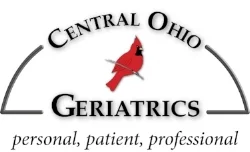By John M. Weigand, M.D.
Director of Geriatric Services
Central Ohio Geriatrics
August is National Immunization Update Month, and therefore an appropriate time for John Weigand, M.D., COG-MED director of geriatric services, to begin a four-part series on immunization updates for adults, particularly updates for those 65 and older. This month, Dr. Weigand writes about the Td and Tdap vaccines for tetanus, diphtheria and whooping cough. Subsequent immunization articles are:
September: Pneumococcal (pneumonia) vaccine
October: Influenza vaccine
November: Shingles (Zoster) vaccine.
Between July and December 2012, the recommendations of the Advisory Committee on Immunization Practices, or ACIP, will be reviewed and summarized for adults, especially those older than 65. Each year the ACIP reviews the recommended schedule of adult immunizations to ensure it reflects the most current knowledge for licensed vaccines.
Tetanus, Diphtheria and Acellular Pertussis
Background
Tetanus (lockjaw) was first described by Hippocrates as “a timeless human misery,” but it was not until 1884 that Carle and Rattone discovered the cause of tetanus by injecting pus from a fatal human case into a rabbit. The first tetanus toxoid vaccine was developed in 1924 and was widely used in World War II. Tetanus is the only preventable disease that is infectious but not contagious. It is contracted through an open area of the skin that is contaminated by a bacteria present in the soil. Tetanus, while not particularly common in the United States, is a dreadful disease that when contracted can often lead to death through progressive paralysis and muscular spasms. In the early 1950s, there were approximately 600 cases of tetanus annually. Since 2000, there have not been more than 80 cases identified each year, due in great part to the effectiveness of the vaccination schedule against this infection.
Diphtheria was discovered by French physician Pierre Bretonneau. He took its name from the Greek word diphthera, meaning “leather,” which described the leathery membrane that formed on the tonsils and throat of patients. Diphtheria has been one of the most deadly diseases, accounting for frequent outbreaks in the New England colonies between 1735 and 1740 and killing as many as 80 percent of the children younger than 10. Known as the “Strangling Angel of Children,” statistics from the 1920s show a prevalence of diphtheria with 100,000-200,000 cases per year in the United States and an estimated 13,000-15,000 deaths. The discovery of sulfa antibiotics and effective vaccines have practically eradicated the disease in the United States (fewer than five cases per year).
Pertussis (whooping cough) is an infection of the respiratory system characterized by severe, unrelenting coughing spells punctuated by a “whooping” sound as the person attempts to take a breath. Before vaccines, pertussis accounted for a staggering number of deaths throughout the world. In the United States between 1926 and 1930, 36,000 deaths were attributed to the disease. By 1974, the initiation of a vaccination program reduced the reported disease by 157 fold, but the incidence of new pertussis infections have been rising in the past 20 years because of decreased vaccine use. In 2004, there were 25,827 documented cases, leading to a renewed urgency to vaccinate children and adults.
Adults born prior to 1940 may never have received the recommended 3-dose vaccination schedule now used in infants to prevent tetanus and diphtheria. The ACIP has identified that grandparents or the elderly who care for infants younger than 12 months are at risk of contracting pertussis and has recommended the use of a combined acellular pertussis, tetanus and diphtheria vaccine, or Tdap.
Recommendations
The two commonly used vaccines are tetanus toxoid/diphtheria, or Td, vaccine andtetanus/diphtheria/acellular pertussis, or Tdap, vaccine.
• Adults younger than 65 should receive the Td vaccine every 10 years and replace the Tdap vaccine once before age 65.
• Any adult (including those older than 65) who may not have completed the recommended 3-dose primary vaccine series should do so, with Tdap being the first vaccine given in the series, followed by the Td vaccine given 2 and 8 months later. A regular 10-year immunization schedule is then recommended following the 3-dose series.
Tdap is specifically recommended for
• Preganant women at more than 20 weeks’ gestation
• Adults, regardless of age, who are close contacts of infants younger than 12 months, including parents, grandparents or child-care providers
• Health-care personnel
Next month: Pneumococcal (pneumonia) vaccine
Sources:
Recommended Adult Immunization Schedule – United States, 2012. JAMA, July 4, 2012, Vol 308, No. 1. Pg 22-27.
Historical Perspective in Pertussis and Use of Vaccines to Prevent It, Cherry JD, Microbe Magazine, March 2007. http://forms.asm.org/microbe/index.asp?bid=48816
History of Diphtheria, http://www.medindia.net/patients/patientinfo/diphtheria.htm
Tetanus, Ang J, http://www.chmkids.org/upload/docs/imed/TETANUS.pdf
